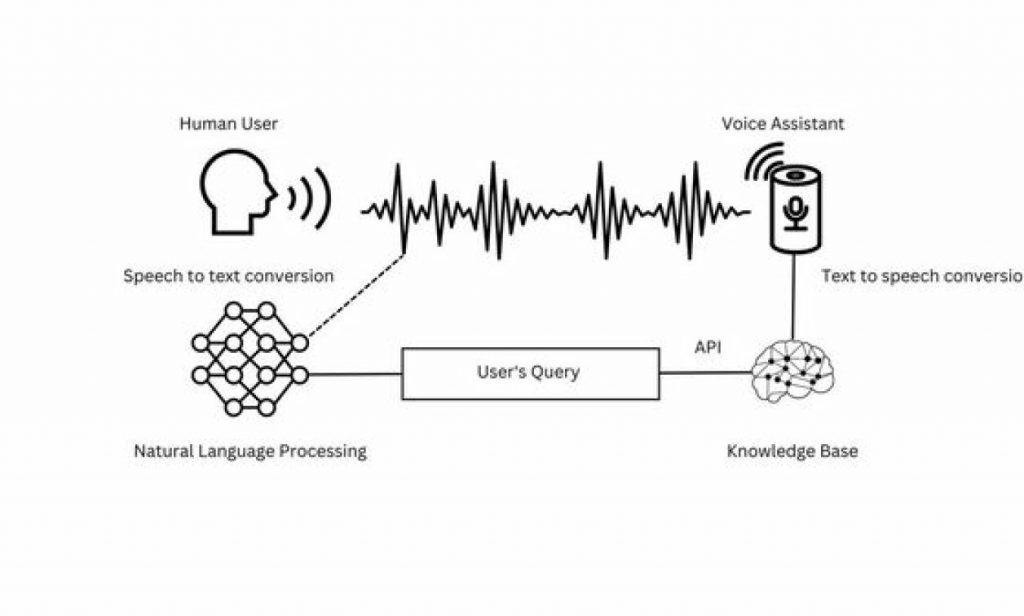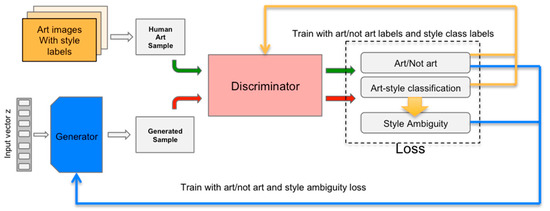
- The Rise of Deep Learning
- Smarter Machines – Automation and Robotics
- The Voice Revolution – Speech Recognition and Natural Language Processing
- Vision Beyond Sight – Deep Learning in Computer Vision
- Personalized Worlds – Recommendation Systems
- Healthcare Transformed – AI in Medicine and Diagnosis
- The Art of Intelligence – Creativity and Generative AI
- Security and Surveillance – Power and Ethical Dilemmas
- The Future of Work – Industry and Innovation
- Conclusion
The Rise of Deep Learning
Deep learning is a subset of artificial intelligence that enables machines to learn from vast amounts of data, identify patterns, and make decisions with minimal human intervention. Inspired by the structure of the human brain, it uses artificial neural networks composed of interconnected layers of nodes, or “neurons,” to process information. Each layer extracts increasingly complex features from the input data, allowing the system to recognize intricate patterns Machine Learning Training in images, text, audio, and more. Unlike traditional algorithms, deep learning models improve automatically as they are exposed to more data, making them highly adaptive and powerful. Applications span across industries from autonomous vehicles and healthcare diagnostics to natural language processing and recommendation systems. By mimicking certain aspects of human cognition, deep learning is not just automating tasks but enabling machines to perform cognitive functions such as perception, reasoning, and even creativity, fundamentally transforming how we interact with technology.
Smarter Machines – Automation and Robotics
Deep learning has emerged as one of the most transformative technologies of the 21st century, evolving from a niche research area into a cornerstone of modern artificial intelligence. Its rise has been fueled by the explosion of data, advances in computing power, and breakthroughs in neural network architectures. Early AI systems relied on handcrafted rules, which limited their ability to handle complex, real-world tasks. Deep learning changed this paradigm by enabling machines to learn patterns directly from raw data, achieving remarkable accuracy in areas like image recognition What Is Machine Learning , speech processing, and natural language understanding. Tech giants, startups, and research institutions alike have invested heavily in deep learning, driving rapid innovation and deployment across industries. As algorithms become more sophisticated and datasets larger, deep learning continues to push the boundaries of what machines can achieve, making it an integral part of our digital future.Deep learning has supercharged automation and robotics, giving machines the ability to perceive, learn, and adapt to their surroundings. Robots are no longer limited to repetitive factory tasks; they can now navigate complex environments, recognize objects, and make decisions in real time. Self-driving vehicles, warehouse drones, and robotic surgeons all rely on deep neural networks to process sensory data and act intelligently. This shift enables greater precision, efficiency, and safety across industries. As robots become more autonomous and context-aware, deep learning is turning mechanical tools into smart collaborators machines that don’t just follow instructions, but understand their purpose.
Ready to Get Certified in Machine Learning? Explore the Program Now Machine Learning Online Training Offered By ACTE Right Now!
The Voice Revolution – Speech Recognition and Natural Language Processing
- Deep learning enables machines to understand spoken language with near-human accuracy.
- Neural networks power virtual assistants like Siri, Alexa, and Google Assistant.
- Speech-to-text systems are improving accessibility for people with disabilities.
- Natural Language Processing (NLP) allows AI to interpret meaning, emotion, and intent behind words.
- Deep learning models like transformers (e.g., GPT, BERT) have revolutionized language comprehension.
- Real-time translation tools are breaking down global communication barriers Decision Trees in Machine Learning.
- Voice interfaces are transforming customer service, smart homes, and automotive systems. The fusion of speech and NLP is making human–computer interaction more natural and conversational.

Vision Beyond Sight – Deep Learning in Computer Vision
- Deep learning enables computers to interpret and understand visual data from the world around them.
- Convolutional Neural Networks (CNNs) power image recognition, object detection, and classification.
- Facial recognition systems rely on deep learning to identify individuals with remarkable accuracy.
- Self-driving cars use computer vision to detect lanes, An Overview of ML on AWS, obstacles, and pedestrians in real time.
- In healthcare, AI analyzes medical images like X-rays and MRIs to assist in diagnosis.
- Surveillance and security systems use vision models for anomaly and threat detection.
- Deep learning is expanding creativity through image generation, enhancement, and restoration.
- From smartphones to satellites, computer vision is redefining how machines “see” the world.
- Deep learning enables AI to generate original art, music, and text.
- Generative models like GANs create realistic Best Deep Learning Books to Read images, videos, and designs from scratch.
- Large language models assist in writing stories, scripts, and even code.
- AI tools help artists, musicians, and designers brainstorm and refine ideas.
- Personalized content creation tailors art, music, and experiences to individual preferences.
- Generative AI lowers barriers to creativity, making professional-quality outputs accessible to all.
- Raises philosophical questions about authorship, originality, and the evolving definition of creativity.
To Explore Machine Learning in Depth, Check Out Our Comprehensive Machine Learning Online Training To Gain Insights From Our Experts!
Personalized Worlds – Recommendation Systems
Deep learning powers the personalized experiences that shape our digital lives. Recommendation systems use neural networks to analyze user behavior, preferences, and interactions to predict what we’ll like next. From Netflix suggesting your next binge-worthy show to Spotify curating playlists and Amazon recommending products, these systems learn continuously from massive datasets. Unlike traditional algorithms, deep learning captures The Best Machine Learning Tools subtle relationships between users and content, creating a dynamic and tailored experience. This personalization not only boosts engagement but also redefines marketing and media consumption. In essence, deep learning turns data into intuition building digital worlds that seem to know us better than we know ourselves.
Healthcare Transformed – AI in Medicine and Diagnosis
Deep learning is revolutionizing modern medicine by enhancing accuracy, speed, and personalization in healthcare. Neural networks analyze vast amounts of medical data from images and lab results to genomic sequences to detect patterns invisible to the human eye. AI-driven diagnostic tools can identify diseases like cancer, heart conditions, and neurological disorders earlier than traditional Machine Learning Training methods. In radiology, deep learning assists doctors by interpreting X-rays, MRIs, and CT scans with remarkable precision. Personalized treatment plans, drug discovery, and predictive analytics are improving patient outcomes and reducing costs. As deep learning continues to mature, it’s transforming healthcare from reactive treatment to proactive prevention, reshaping the future of medicine itself.
Looking to Master Machine Learning? Discover the Machine Learning Expert Masters Program Training Course Available at ACTE Now!
The Art of Intelligence – Creativity and Generative AI

Security and Surveillance – Power and Ethical Dilemmas
Deep learning has dramatically enhanced security and surveillance, enabling systems to detect threats, monitor behavior, and respond in real time. Facial recognition, anomaly detection, and predictive analytics allow authorities and organizations to identify potential risks The Best Machine Learning Tools faster and more accurately than ever before. However, this power comes with significant ethical dilemmas. Widespread surveillance can infringe on privacy, enable mass tracking, and reinforce biases present in the data. Misuse or overreliance on AI-driven security tools can lead to discrimination or wrongful profiling. As deep learning continues to advance, society must balance safety with ethical responsibility, transparency, and respect for individual rights.
Preparing for Machine Learning Job Interviews? Have a Look at Our Blog on Machine Learning Interview Questions and Answers To Ace Your Interview!
The Future of Work – Industry and Innovation
Deep learning is reshaping the landscape of work, driving innovation and transforming industries at an unprecedented pace. Routine tasks are increasingly automated, allowing humans to focus on complex problem-solving, creativity, and strategic decision-making Best Deep Learning Books to Read. In manufacturing, AI-powered robots enhance efficiency and precision, while in finance and logistics, predictive analytics optimize operations. New roles are emerging in AI development, data science, and ethical oversight, requiring skills that blend technology with human judgment. While some jobs may be displaced, deep learning also creates opportunities for growth, collaboration, and innovation, ultimately redefining the way we work and pushing industries toward a smarter, more adaptive future.
Conclusion
Deep learning is no longer a futuristic concept it is a transformative force shaping nearly every aspect of our lives. From automating industries and revolutionizing healthcare to redefining creativity and personalizing digital experiences, its impact is profound and far-reaching. Yet, with great power comes great responsibility. Ethical considerations Machine Learning Training , bias, privacy, and the displacement of human labor must be addressed as these technologies continue to evolve. Embracing deep learning thoughtfully allows us to harness its potential while mitigating risks, ultimately creating a world where humans and intelligent machines collaborate to solve complex challenges and unlock new possibilities



